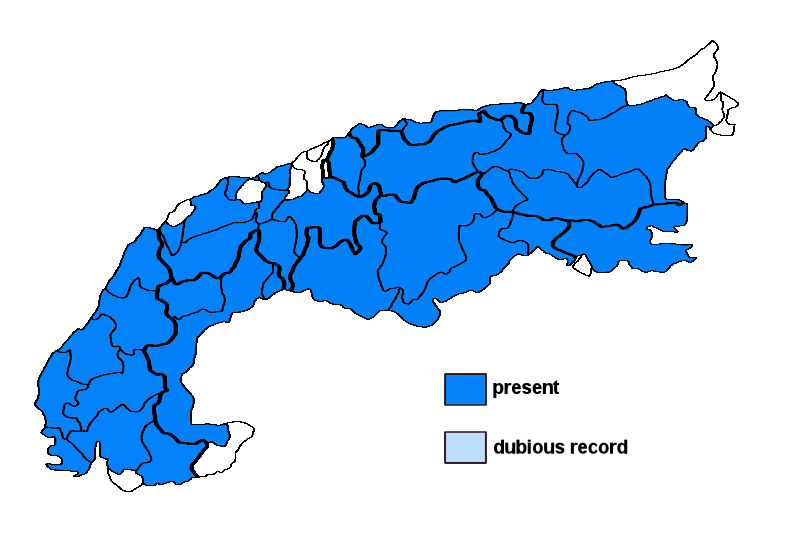Cladonia gracilis (L.) Willd. subsp. gracilis
Syn.: Cladonia chordalis (Flörke) Nyl., Cladonia gracilis (L.) Willd. var. aspera Flörke, Cladonia gracilis (L.) Willd. var. chordalis (Flörke) Schaer., Lichen gracilis L.
Lichenised.
Substrate: calciferous soil, acidic soil (mostly on siliceous substrata), plant debris
Altitudinal range: from the submediterranean/colline belt (potential vegetation: mixed deciduous forests dominated by Quercus and Carpinus) to the subalpine belt (potential vegetation: open, taiga-like forests dominated by Larix decidua and/or Pinus cembra and Rhododendron)
Note: a circumpolar, cool-temperate to southern arctic lichen found on acid soil, more rarely on decaying wood in upland areas. According to Ahti (see Nimis 2016) its presence in the Alps is dubious, and most records could refer to C. macroceras.
Austria: Vorarlberg; Tirol; Salzburg; Kärnten; Steiermark; Oberösterreich; Germany: Oberbayern; Schwaben; Switzerland: Bern; Graubünden; Luzern; Schwyz; Ticino; Uri; Vaud; Valais; France: Alpes-de-Haute-Provence; Haute-Alpes; Alpes-Maritimes; Drôme; Isère; Savoie; Haute-Savoie; Vaucluse; Italy: Friuli; Veneto; Trentino Alto Adige; Lombardia; Piemonte; Valle d'Aosta; Slovenia: Alpine and Pre-Alpine Slovenia;





